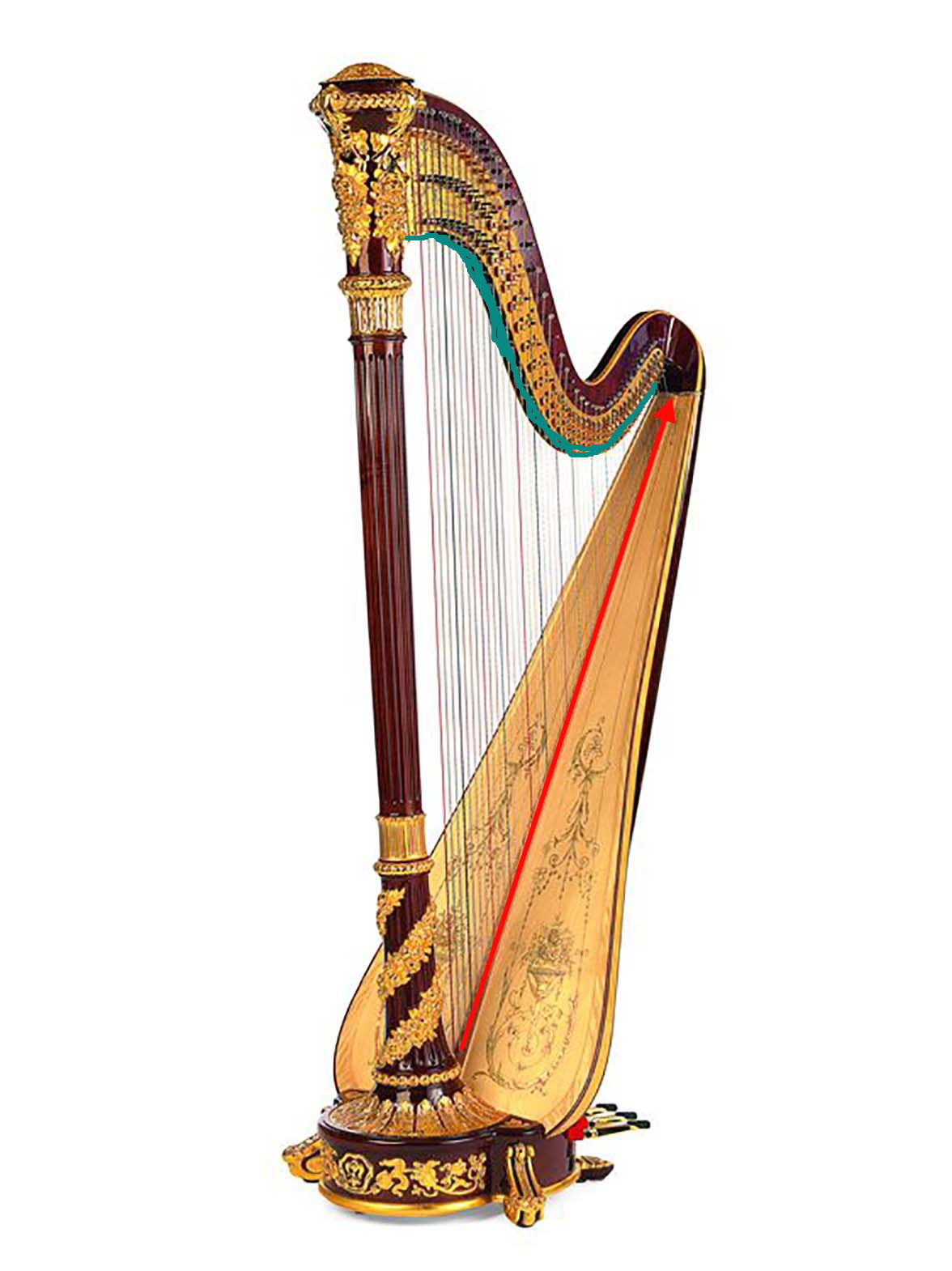I’ve been wondering about this for quite a while, and I finally spent a few unproductive hours Googling, but have found no web page that addresses the question.
Here’s the classic harp shape I’m referring to:
The unconfusing part is the red line, which is consistent with a decrease in string length making higher and higher pitches. The utterly confusing part is the green curve above it, which starts off somewhat linear, then does a rather spectacular dive, then bends back towards the freaking ceiling.
Here is a corresponding image that I do understand, because I grew up with the instrument in question — this is a grand piano, looking down on it from above, so you can see its harp. (Yeah, the array of strings and metal body to which they’re attached is also called a harp).
Most of the piano’s strings — the part I’ve outlined in red — create a geometric progression from long strings for the lower notes and short strings for the upper notes. It forms a basic triangle, with a minor exception I’ll explain later.
There are a handful of strings mounted at a different angle which I’ve outlined in green — these continue the progression to lower notes, the ones you’d expect to be to the left of the ones outlined in red, but they obtain part of their lower pitch by being wrapped in metal to make them thicker, which makes them resonate at a lower frequency without having to be so long. If you didn’t do that, the trajectory of the red figure would have to keep going and grand pianos would be really really freaking long by the time you got to the lowest notes.
There’s a smaller subset that I outlined in purple within the green area — those are wrapped even more densely, which is why the top of the green outline figure is able to suddenly stop getting rapidly taller.
Meanwhile, over on the far right of the red outline area, you’ll notice that the plummeting string length levels off. That’s because to get higher pitches on the very top strings, you just tighten the heck out of them when you’re tuning instead of continuing to shorten them. At a certain point they stop sounding like piano strings if you keep making them shorter. As it is, the very top notes of a piano sound glassy and lack the richness of the strings farther down. It’s a compromise, same as the wrapped strings at the other end.
SO… I’m assuming there’s some similar set of rationales for why the instrument we call a harp has its weird U-bend. That the strings at a certain point are made from a different material, or are wrapped in wire, or are just plain thicker (or thinner, depending on which direction you’re moving to)… but I can’t find a specific explanation anywhere!
Any of you folks harpists, and know? Or have better Google-fu, perhaps?

